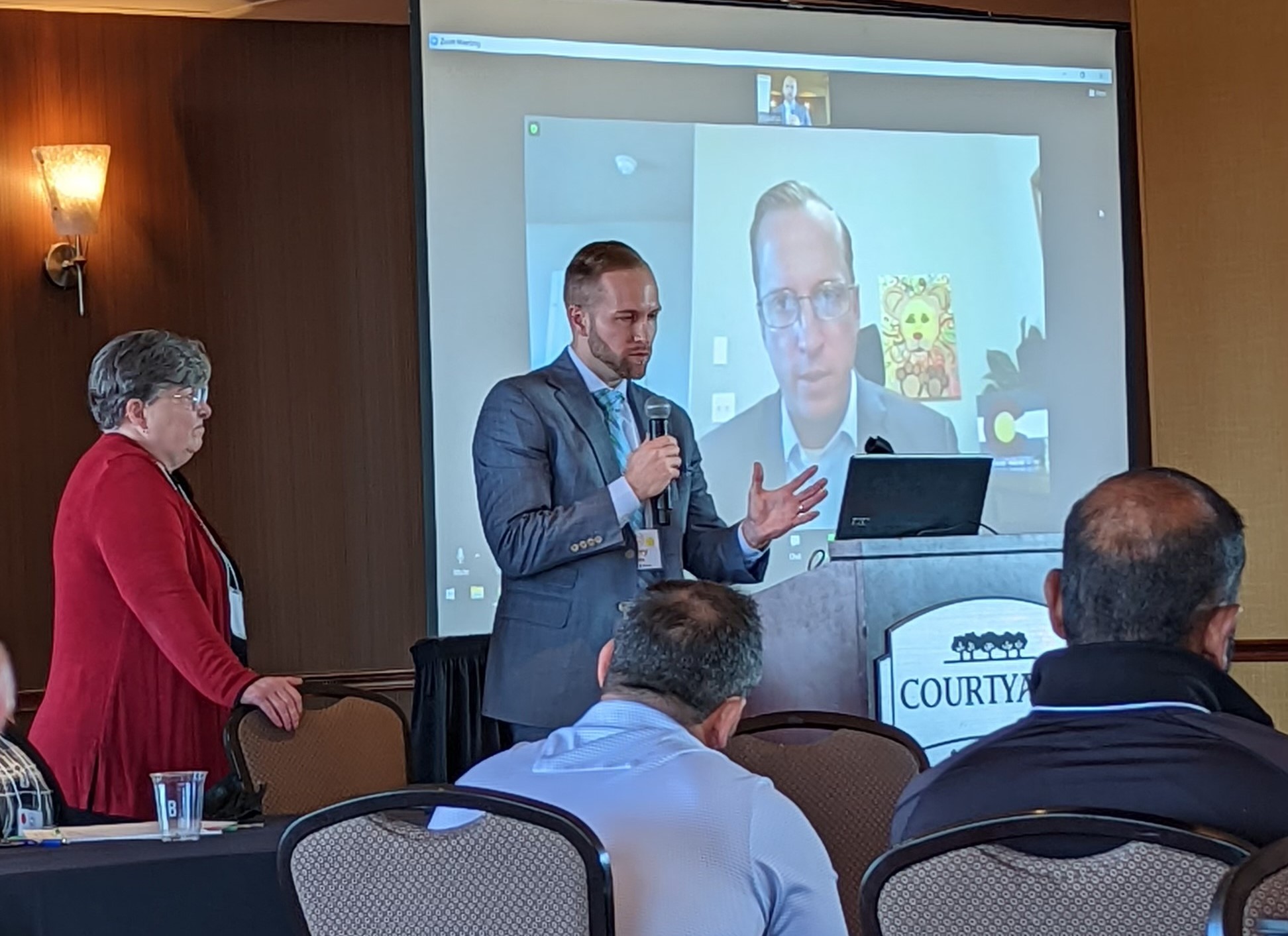Identifying an ensuing loss can be tricky where an otherwise excluded cause of loss ultimately results in a covered loss. International Risk Management Institute, Inc. (IRMI) describes the term “ensuing loss” as follows:
Ensuing Loss Clause — an exception to an exclusion in a first-party property policy that applies in a special type of fact pattern where the damage caused by an excluded peril operates as a link in the “chain of events” that enables a covered peril to damage other property. Symbolically, a classic ensuing loss fact pattern can be represented as follows: excluded peril → excluded damage → covered peril → ensuing damage. Note that there must be two kinds of damages—an initial loss and an ensuing loss. Most courts will not apply an ensuing loss provision if an excluded peril caused a covered peril that results in only one kind of damage.
A good example of an ensuing loss is found in the 1985 Arizona case, Roberts v. State Farm Fire and Casualty Company.1 The Roberts family had a homeowner’s insurance policy with State Farm that excluded coverage for losses caused by insects. However, the policy also included an Ensuing Loss Clause stating that “any ensuing loss from [the list of excluded items] not excluded is covered.”
Unfortunately for the Roberts family, a swarm of bees infiltrated the roof of their home and built a beehive in the attic. The Roberts had to retain an exterminator to remove the bees from the home, but due to the location of the beehive, the exterminator was unable to remove the hive. After the bees were exterminated, the beehive began to melt and a substantial amount of honey began dripping into the dining room. State Farm denied coverage for the damage caused by the honey, claiming that it was an excluded loss since it was caused by insects. The Roberts conceded that there was no insurance coverage for the costs incurred to exterminate the bees, however, they maintained the position that the honey damage was an ensuing loss that should be covered.
These facts were ultimately presented to the Supreme Court of Arizona and the court was confronted with answering one question:
[D]oes an insurance policy that excludes damage done by insects cover, through an ‘ensuing loss’ provision, damage done after the insects are exterminated by the leakage of honey from their hive?2
Neither the Roberts, nor State Farm, disputed the Webster’s Third New International Dictionary (1969) definition of the term “ensuing” and the court found that the Ensuing Loss Clause was unambiguous and the loss due to honey seepage was an ensuing loss covered by the policy.3
While Roberts is a good example of an ensuing loss, various fact patterns have been presented to Arizona courts, which on their face appear to be an ensuing loss yet have ultimately been determined to not fall within the exception. Cooper v. American Family Mutual Insurance Company,4 is one of these fact patterns where the United States District Court of Arizona examined Roberts and drew a distinction between the original and direct loss caused by the excluded event and the secondary loss, stating:
[T]he [ensuing] loss provision does not reinsert coverage for excluded losses, but reaffirms coverage for secondary losses ultimately caused by excluded perils.5
In Cooper, the court cited Acme Galvanizing Company v. Fireman’s Fund Insurance Company,6 to support its reasoning.
Acme Galvanizing provides a good illustration of the important difference between the direct/original loss and the ensuing loss in determining coverage. There, a steel kettle at the insured’s plant ruptured, allowing several tons of molten zinc to spill onto surrounding equipment. The rupture was caused by a latent defect thus excluded under the policy’s “inherent vice/latent defect” exclusionary provision. Concluding the discharge of the molten zinc was not an “ensuing loss,” the Acme Galvanizing court stated:
Here, there was no peril separate from and in addition to the initial excluded peril of the welding failure and kettle rupture. The spillage of molten zinc was part of the loss directly caused by such peril, not a new hazard or phenomenon. If the molten zinc had ignited a fire or caused an explosion which destroyed the plant, then the fire or explosion would have been a new covered peril with the ensuing loss covered. That did not occur.7
When considering whether an Ensuing Loss Clause could provide coverage, it is important to identify two separate perils – an initial excluded peril and a subsequent covered peril. The distinction can be difficult to decipher as it was in Roberts (a beehive built and inhabited by bees, and the subsequent melting of the beehive), but Cooper, Acme Galvanzing, and other cases make it clear that a distinction must be apparent in order to apply coverage under an Ensuing Loss Clause.
_____________________________________
1 Roberts v. State Farm Fire and Cas. Co., 146 Ariz. 284, 705 P.2d 1335 (1985).
2 Roberts, 146 Ariz. at 284.
3 Id. at 286 (“the word ‘ensuing’ means to take place afterward … to follow as a chance, likely, or necessary consequence: RESULT … to follow in chronological succession.”).
4 Cooper v. Am. Family Mut. Ins. Co., 184 F. Supp 2d 960 (D. Ariz. 2002).
5 Cooper, 184 F. Supp. 2d at 964.
6 Acme Galvanizing Co. v. Fireman’s Fund Ins. Co., 221 Cal. App. 3d 170, 180, 270 Cal. Rptr. 405, 411 (Ct. App. 1990).
7 Acme Galvanizing, 221 Cal. App. 3d at 180, Cal. Rptr. at 411.




